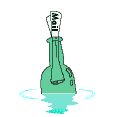I use the ready mix, not the one with the vinyl in it, nor the container that's as light as air. I use the one that has some weight to it and is gray in color after you stir that small amount of liquid in. Do as the container says as for filling holes as well as joints. I prefer the fiber mesh tape on joints rather than the paper roll.
When it comes to sanding use DRYWALL & PLASTER SANDING abrasive cloth. Don't think twice of the cost, it's double sided and last much longer than standard sandpaper. With it's mesh screen construction, clogging is rare.
I use the medium 120 grit for most all that I do, that includes using it on wood. Use caution since this is very abrasive and sand quickly! After doing as the directions tell you, building up because of shrinkage as the compound dries, and you have sanded level to the area around it your ready for the next step. Caution again, you do not want to sand the paper around your patch. It shows because you change the texture for that area.
For this step you use a fine regular sandpaper. Apply a thin coat of compound over the area, fanning out twice the distance as the width of your patch all the way around. Allow to dry, doesn't take long, then sand smooth.
Next have a spray bottle ready with some water in it and a dry paint roller. Apply a very thin coat of compound, now mist it with the spray bottle, then take the roller and go over it as if you are painting it. This is the secret to hiding that "panty line"! Now when you paint, using roller or brush, the texture of the area is so close to the texture of the plaster board you can not see the patch. If you just put the board up, you do the same for all the joints.
Now if your going to paper the walls, do as above, but stop before using the roller and misting. Instead mix 3 to 5 parts paint, usually white, to one part compound. Then brush or roller this over the entire wall. Since a primer is needed on the plaster board as a sealer, so that when you strip the paper later it doesn't take the paper from the plaster board. Use a fine roller since it will leave a bit of texture, as the lines from the brush will make a pattern also. So if using a brush, use it in vertical, long even strokes. This covers the edge of the joints, as well as patched holes, and the texture under the paper looks so natural it's not given a second thought if a person notices it.
You now have my secret way of doing walls like a pro. Others say: ah just mist and fan it out! But this is a change of the texture for the area. The fine roller comes so close to matching the texture of plaster board it makes a perfect job, and it's easier! This can be done to the ceiling also.
HOME for some great stuff 
 Email
EmailThis page hosted by